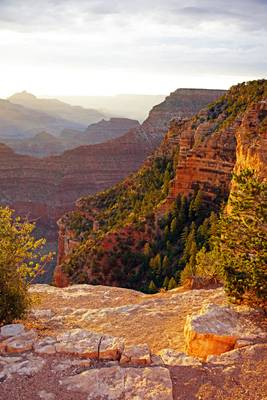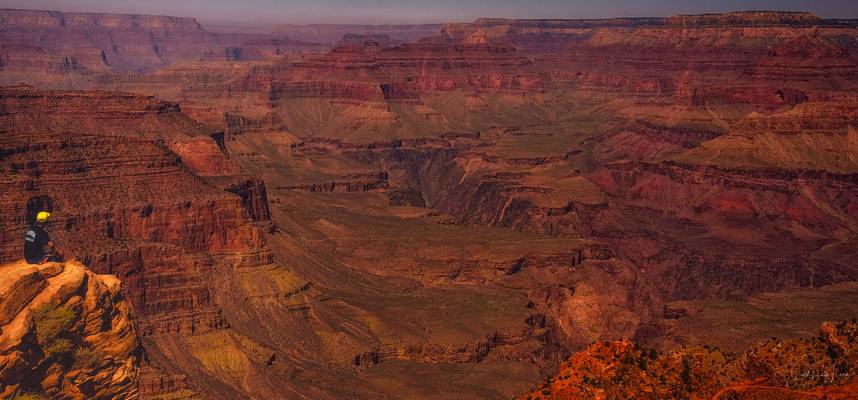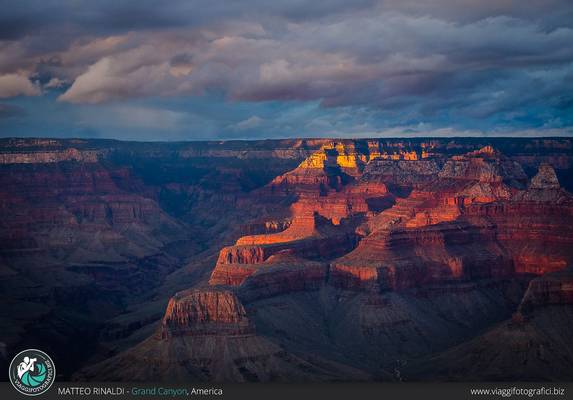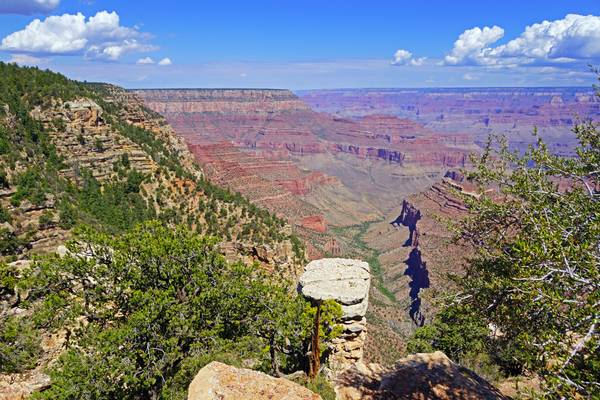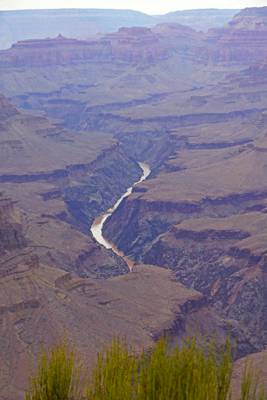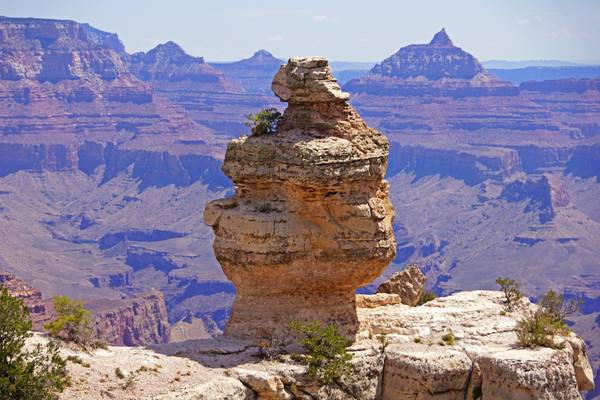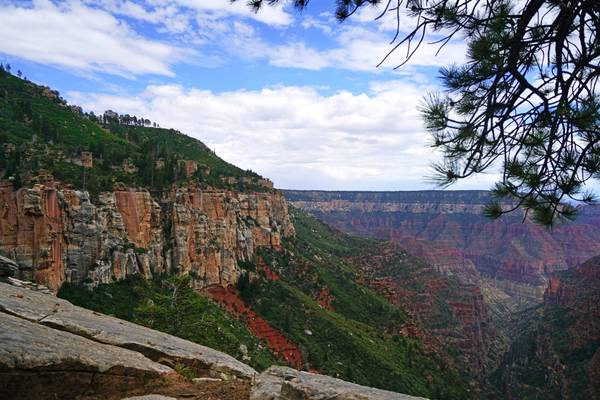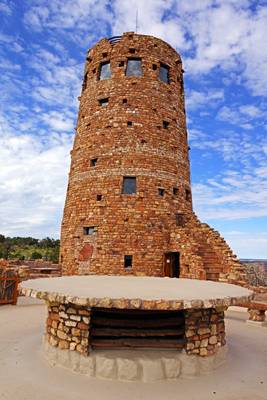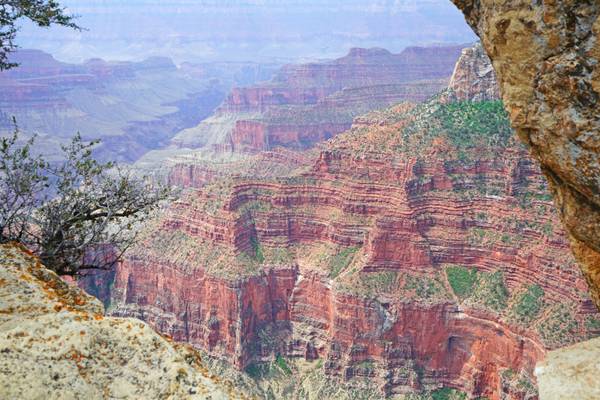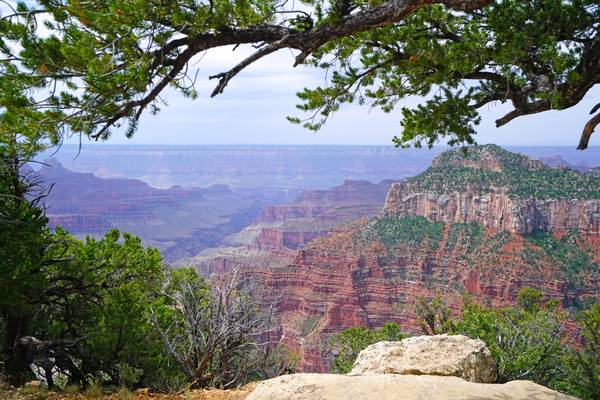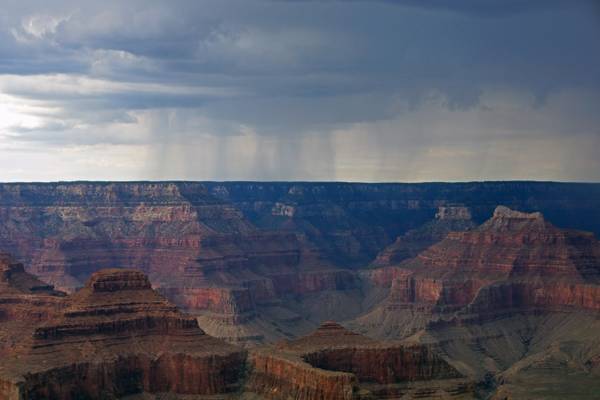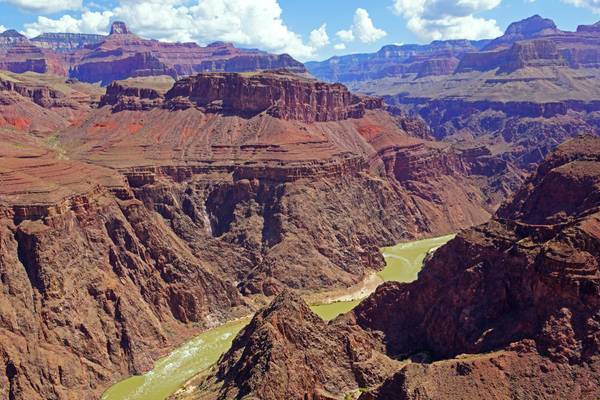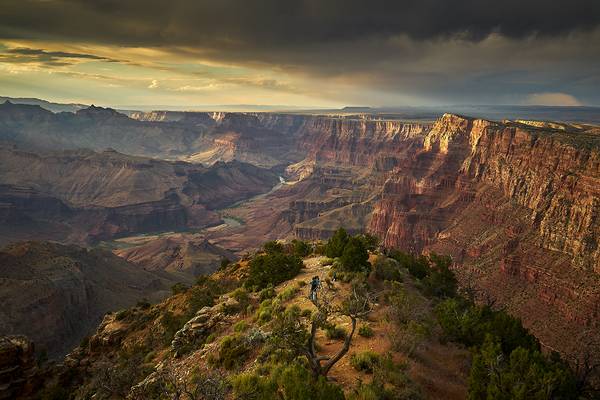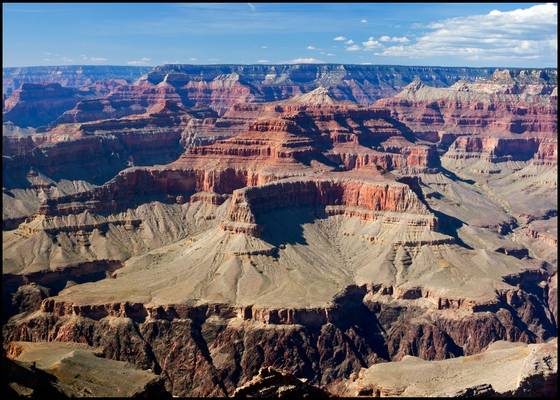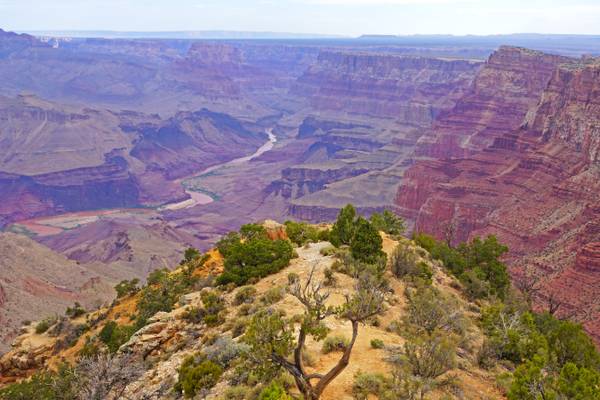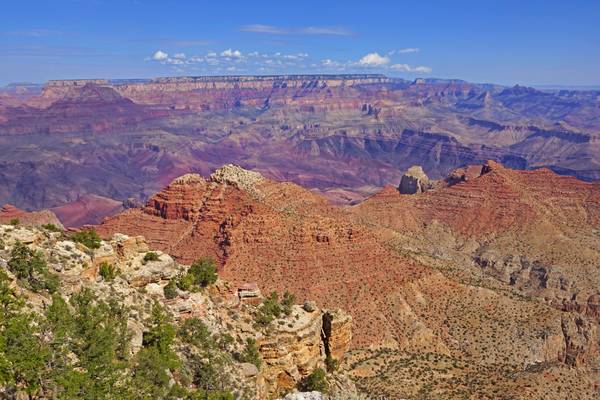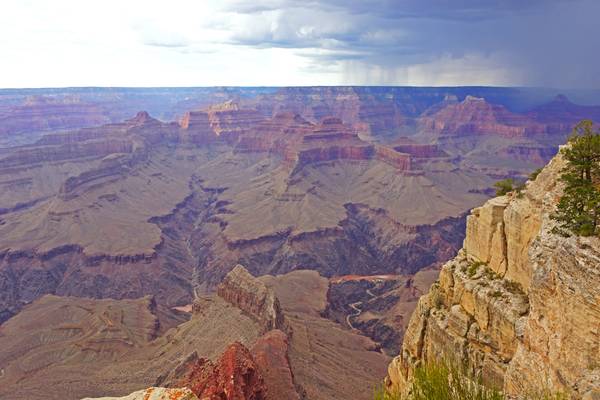
United States » Arizona »
Grand Canyon National Park
Grand Canyon National Park is one of the most iconic natural wonders in the United States, located in the state of Arizona. The park is home to a vast and awe-inspiring landscape that attracts millions of visitors every year. The Grand Canyon is a photographer's paradise, with countless opportunities to capture stunning images of the canyon's unique rock formations, vibrant colors, and breathtaking vistas. Some of the best photography locations in the park include the South Rim, which offers panoramic views of the canyon, and the North Rim, which is known for its rugged terrain and stunning sunsets.

by Sandeep Thomas
- Henry David Thoreau.
| facebook | 500px | ferpectshotz |
Another shot of Yavapai Point at sunset. This time I used my wide angle lens for getting the shot. This was one location at the Grand Canyon where I reached before everybody else and had the location all to myself to set the camera up for the sunset. Of course it got filled up a soon as sunset was happening but I had all the time in the world to change lenses and take photos at my leisurely pace.
Hope you all enjoy the shots, thanks for visiting…
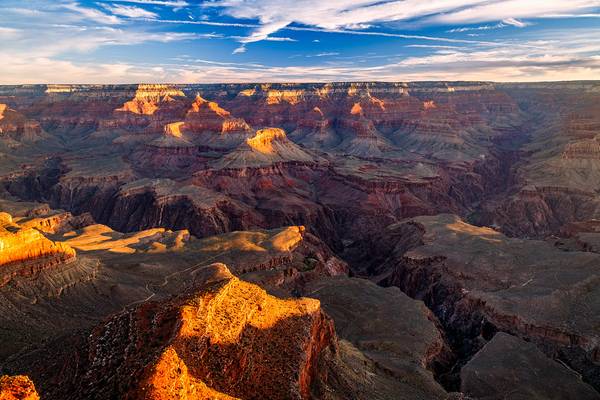
by Yi Jiang
Grand Canyon National Park
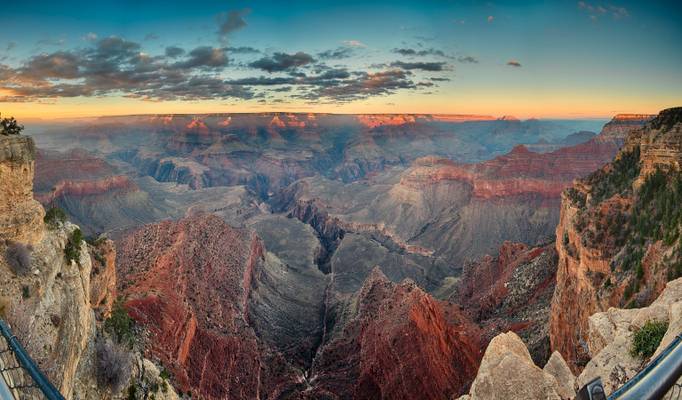
by Sandeep Thomas
- Ralph Waldo Emerson.
| facebook | 500px | ferpectshotz |
This was taken on the same day of the perfect inversion in the earlier pictures I posted. I believe this was taken at Yavapai Point, which is another very popular destination on the south rim due to its close proximity towards the visitor center. I initially thought I will steer clear of this location and stick to less popular vista points but due to the clouds on the desert view road which were on the East I decided to try this location. And I hit pay dirt.
We reached early and had the location all to ourselves and I decided to try the panorama stitch I tried at the Griffith Park observatory. The problem was due to the unique elevation of the canyon and the fact that the actual interesting stuff is down in the canyon it’s almost impossible to use your tripods pano function and one has to carefully align exposure and composition manually in the freezing cold. I clipped some edges and almost fried my computer making this image but I am really satisfied the way it came out.
Hope you enjoy it as much as I did making it. Thanks for visiting and have a great Monday…
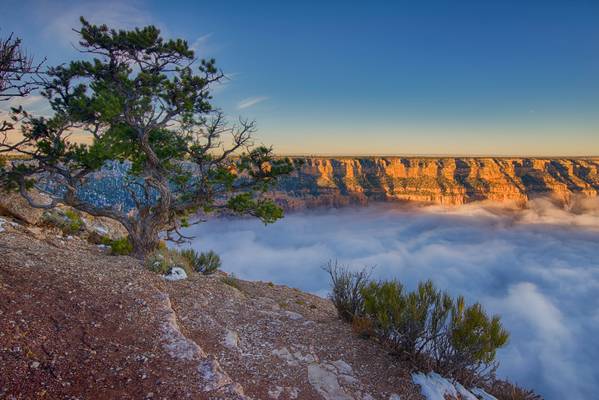
by Sandeep Thomas
- Eliot Porter
| facebook | 500px | ferpectshotz |
While we were at the Yaki Point on Thanksgiving for sunrise shoot we had a chance to witness a rare perfect inversion occurring at the Grand Canyon. The problem was at that time I didn’t know it was a rare even and was bored and little pissed that the clouds were denying me the shots I wanted. So I was wandering around looking for interesting things to shoot and found this tree which was being lit by perfect light from the morning sun and I had to take the shot.
I fell in love with the light on this shot, I just wish I had the presence of mind to get a Pano for this shot and include some more of the Canyon. Thanks for visiting, Hope you all like it.
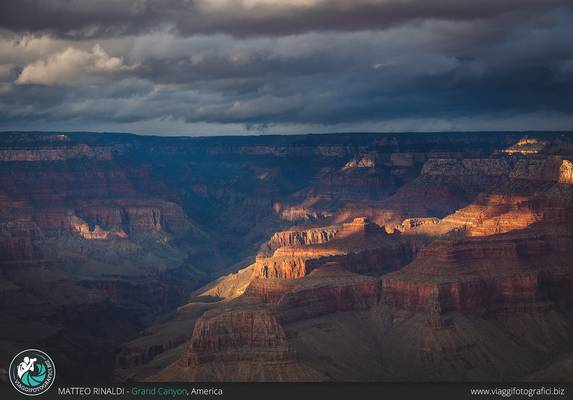
by Matteo Rinaldi
Scatti realizzati durante l'ultimo viaggio in America con www.viaggifotografici.biz
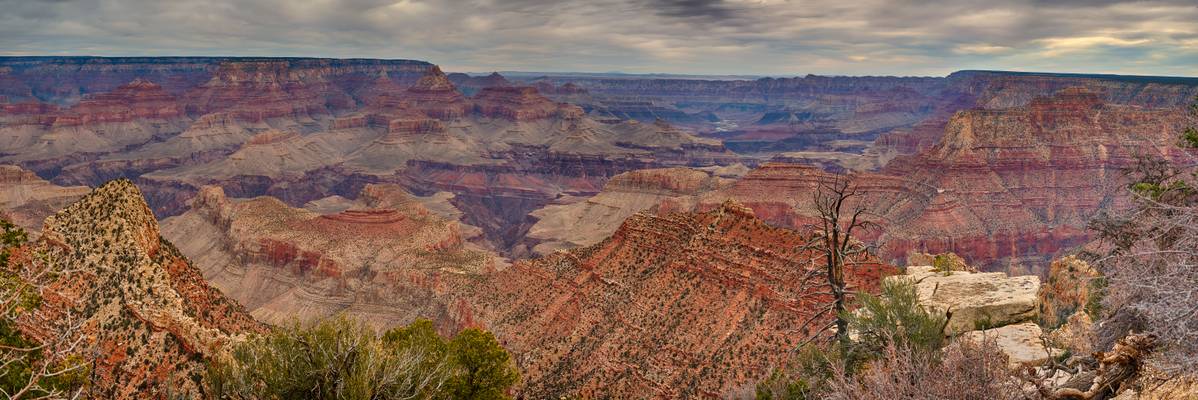
by Sandeep Thomas
- Walt Whitman.
| facebook | 500px | ferpectshotz |
Today’s picture is a panorama stitch of the Grand Canyon from somewhere in the east rim. We had really cloudy day and very soft diffused light which kind of softened the colors and contrast of the canyon but the details are still amazing to me.
Thanks for visiting hope you all are having a great week..

by Sandeep Thomas
- Emily Dickinson.
The Grand Canyon National Park has always been one of my favorite spots to photograph. The love affair started with the first visit when I was lucky enough to watch a perfect cloud inversion. Since then, every time we visit, we have had some of the best conditions. But even at such a spectacular location, photography can be a challenge. I have myself had quite a few experiences where I have been underwhelmed with the results.
When I first visited the park, I was quite intimidated by the dramatic variation in the scene's dynamic range. My first approach was to try HDR processing. While HDR images can pull out the texture's details very well, this type of processing makes the image look very unrealistic. I mean, if there are bright elements in a scene, your brain will expect dark areas. It took me a while to learn what was missing in my photography. The dark regions of the image are the part that adds mystery and depth to a scene.
I was not too happy with the composition as I believe I added too much sky in the image, but I love the details in the canyon part of the picture. You can see how the dark areas' presence brings the viewer's attention to the brighter areas of the scene and allows them to see the canyon's details. Learning this little secret has affected the way I see, compose, and edit an image.

by Yi Jiang
Grand Canyon, AZ
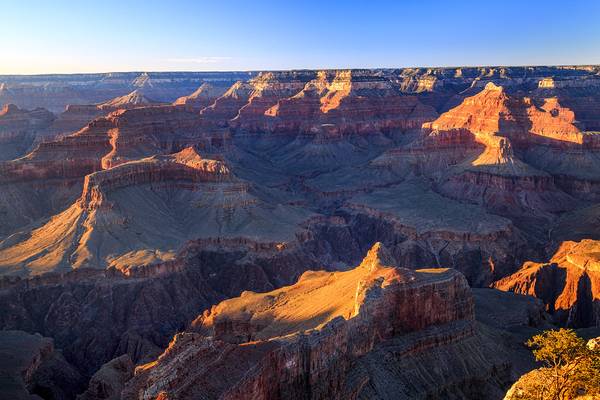
by Yi Jiang
Grand Canyon, AZ
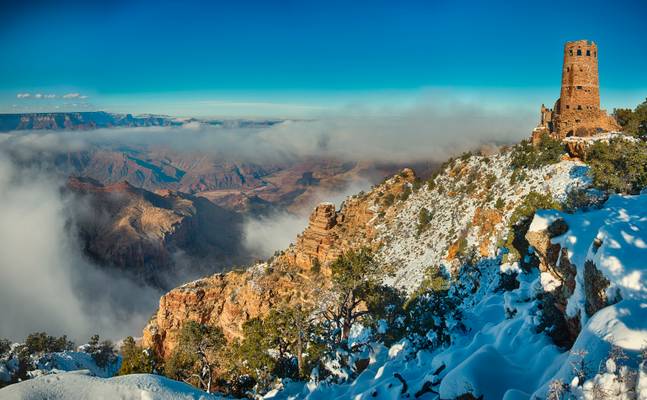
by Sandeep Thomas
- Ansel Adams.
| facebook | 500px | ferpectshotz |
My wife has been pestering me a bit about not having a proper winter picture in my portfolio even after spending a lot of time in the Northeast. I mean she has seen the shots of frozen ponds and landscapes which I have taken but really wanted some show covered shots. So when we got to Grand Canyon and took the east rim road we were pleasantly surprised to actually see a nice fresh layer of snow on the ground. When we got to the desert view vista, we took a small walk by the rim and finally just before the desert view tower I found this amazing scene. It took me about 15 minutes to set my camera up for this shot on the tripod and then we waited for a small break in the clouds just to get some depth. What you are actually seeing here is a panorama stitch of about 20 shots which were painstakingly stitched together. I need to rally update my computer I don’t think it can handle all these 36 megapixel pano stitches.
Thanks for visiting hope you liked the shot..
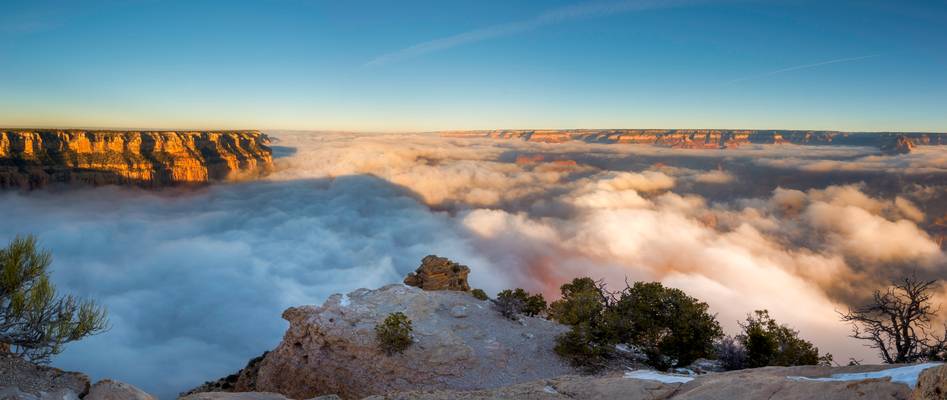
by Sandeep Thomas
- Henry David Thoreau.
| facebook | 500px | ferpectshots |
I cannot believe it has been almost seven years since our first trip to the magnificent Grand Canyon National Park. Looking back, it is hard to believe how unprepared I was for the journey. First of all, being new to the southwest, I had no clue about the high desert. In my mind, all deserts were hot and dry, so we packed light jackets and mostly summer clothing on our first trip. We drove up pretty late to the hotel, but I remember seeing small patches of white and wondering what they were.
We woke up around 4 am for our first sunrise shoot of the trip, walked outside, and realized the temp was in the low 20s with a decent amount of wind. I remember layering as much as possible before heading out again. I realized later that the small patches of a white substance that we kept on seeing were snow patches. I learned a lot about the deserts and how altitude influences their behavior during that trip.
This shot was taken during sunrise at Yaki Point. To be honest, I was a bit disappointed that I could not see the canyon floor because of the clouds. I even mentioned that to a park ranger and asked her if it is common during the colder months. When her face becomes serious, and she took off towards the rim, I knew something was up. Later she told me that its such a rare phenomenon that she has only heard about this happening before. When you have a national park service ranger behaving like a first-time visitor, you know you have got something special.
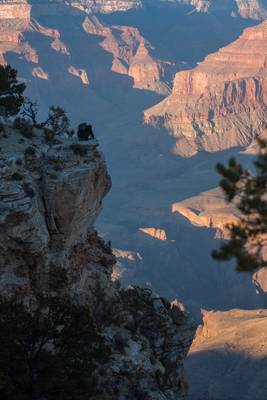
by Sandeep Thomas
- Will Oldham.
| facebook | 500px | ferpectshotz |
I took this shot while we were at Yaki Point for sunrise. I believe this guy is a professional rock climber as he was hanging out way too close to edges of the cliffs to get his shots. I so band wanted to see the shots he had taken but we had to get back to the visitor center to start driving. I took this shot while waiting for the bus. Just amazed to see him crouching by the cliff to get that view.

by Michael
One of my most favourite photos. I took it 5 years ago and it was on flickr for a long time. Today I gave it a new processing. I learned a lot in the last 5 years and even my older photos can be enhanced by my new post processing techniques.
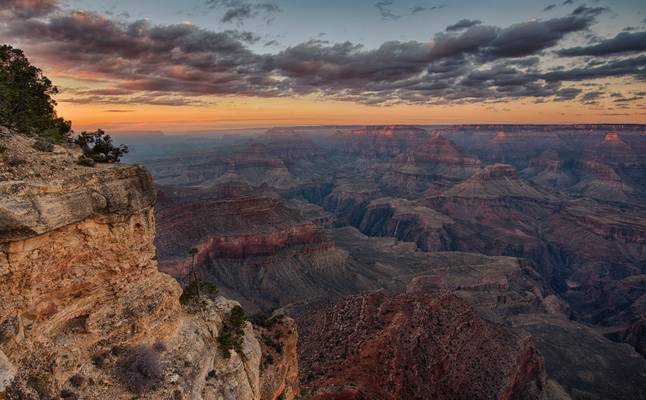
by Sandeep Thomas
- Michelangelo.
| facebook | 500px | ferpectshotz |
Another great view from the Grand Canyon National Park. This is the view to west from Yavapai Point Taken during sunset. This is one of the most popular locations on the south rim as it is the closes to the park visitor's center. Shooting it after sunset is a bit challenging as most of the canyon is way darker than the sky. I used a 0.9 Lee ND grad filter to get this, usually i never go above a 0.6 ND grad for sunsets.
Thanks for visiting hope you all have a great week ahead.
![A good photograph is knowing where to stand…[explored]](https://cdn.phoide.com/Thumbs/c417ebc7-2e48-4bbd-ad2a-12a786a6e0b0.jpg)
by Sandeep Thomas
- Ansel Adams .
| facebook | 500px | ferpectshotz |
A shot of the Colorado River from the desert view tower location during the perfect inversion which happened during the last Thanksgiving Day weekend. I have more pictures of the fog filled canyon in photostream which I have posted earlier. I took this one when there was a small opening in the river of clouds that were filling the canyon. This only lasted for a couple of seconds and it was fascinating to see the sunlight under the clouds and the muddy river snaking through the canyon.
This was one of my favorite shots from this trip. Thanks for visiting. Enjoy!

by David Hamments
The layers of the Grand Canyon.... panoramic view as seen from Mather Point.
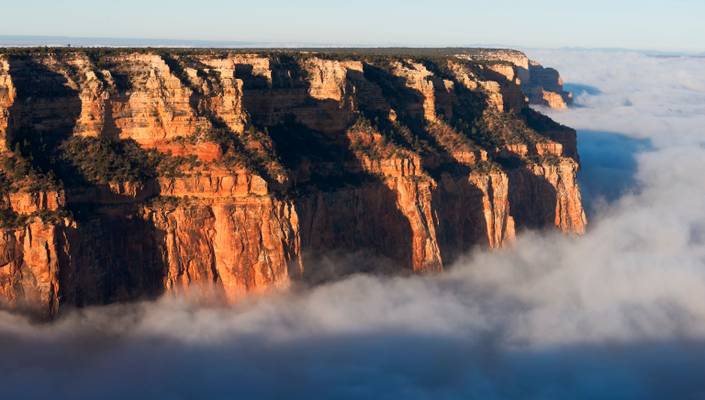
by Sandeep Thomas
- Leo Rosten
| facebook | 500px | ferpectshotz |
I am not a 100% sure where I took this picture but I am almost certain it’s at Yaki point on the South Rim. I just liked the way how the cliffs stood out against a never ending sea of cloud and fog. The sun had already rose by the time I took this shot and was lighting up these cliff sides rather brightly. I loved the play of clouds, light and shadows here and just the massive scale of the place.
Hope you all like it, thanks for visiting..
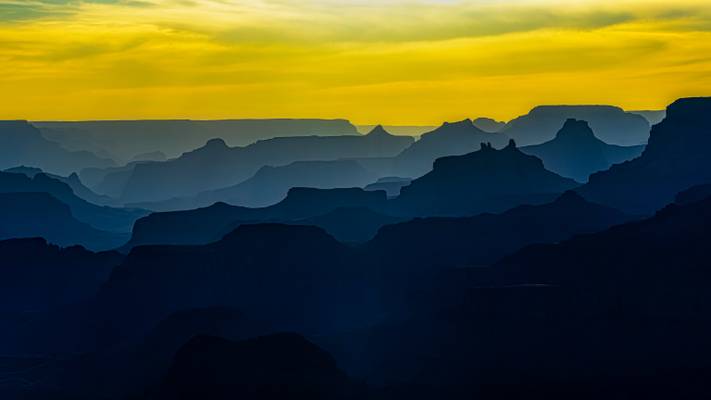
by David Hamments
.... sunset pano in the Grand Canyon National Park, Arizona
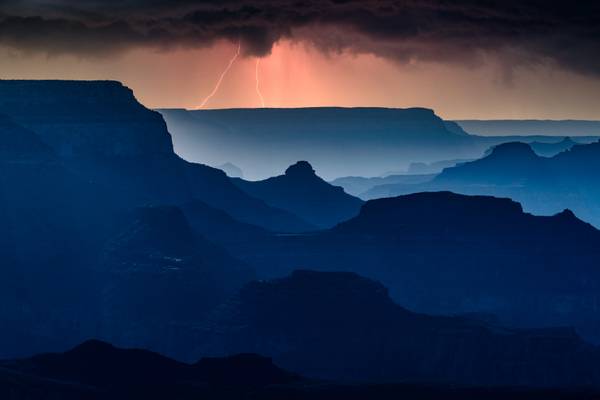
by David Hamments
... over the Grand Canyon
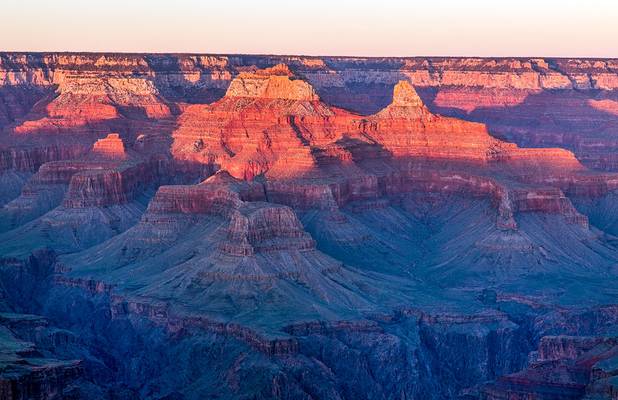
by Yi Jiang
Grand Canyon, AZ

by Sandeep Thomas
- Hannah Arendt.
| facebook | 500px | ferpectshotz |
Grand Canyon, just after sunrise on cloudy day covered in soft light is a dream to shoot. This shot was taken somewhere on the east rim at the desert view road. It was an awfully cold morning with blistering winds, which has been the case every time I visited the canyon. It’s still a unique experience, to stand at the rim of the canyon in the morning and to look down at its massive depths.
Thanks for visiting my pics hope you are having a good Monday :)
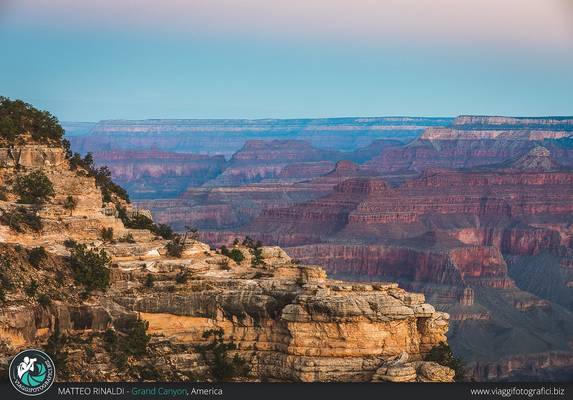
by Matteo Rinaldi
Scatti realizzati durante l'ultimo viaggio in America con www.viaggifotografici.biz

by Sandeep Thomas
- Isaac Bashevis Singer.
| facebook | 500px | ferpectshotz |
One of the dilemmas I faced as I got more into landscape photography, is about getting overwhelmed by grand vistas. While reviewing my images from past trips, I have noticed that there is a trend of going for the broadest possible view of the more iconic photo spots. The problem with this approach is you often come back with the same photo that has been taken over and over by a lot of talented photographers. There is no stamp of authenticity or a unique vision.
As I grew as a photographer, I started to train myself not to get overwhelmed and be okay with not taking all the possible image combinations. My wife immediately noticed the change in my behavior, and she even commented that the photo trips are getting more enjoyable. Today’s shot is from one of those rare moments of control, and it happened at a location which was my top one place since I was a teenager, the Grand Canyon National Park.
The day was rather misty and cloudy, but I noticed that the dew had made the rocks especially vivid, but the grey sky was washing out my wide shots. So, I decided to concentrate more on shots that showed the patterns on the rock and to altogether avoid the sky. Later I learned that this is a technique used broadly by landscape photographers when shooting canyons, but at the time, I didn’t know about this practice. So moral of the story add learning about techniques to your preparation bucket when traveling to your dream location.
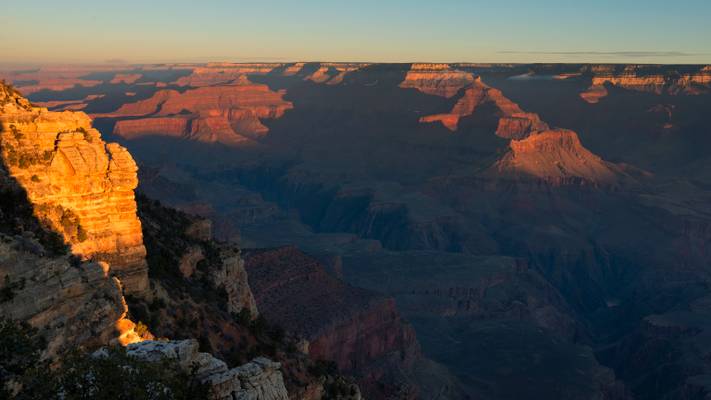
by Sandeep Thomas
- William Shakespeare.
| facebook | 500px | ferpectshots |
When we first visited the Grand Canyon’s south rim, I completely underestimated the scale of the place. I had a whole list of places earmarked for photographs but only later realized the amount of time needed to get from one point to the other. A lot of the photos we took on our first trip ended up being from the spots near the visitor center.
Mather Point is one of the easiest spots to reach from the visitor center and it provides a nice panoramic glimpse into the magic that is Grand Canyon. Yavapai point nearby has a better view but Mather point is easy to get to when racing against time to get a sunrise shot. The sunlight was peaking through as we were setting up. The sunrise is always magical at a canyon even where there is not much drama in the sky. The light was pouring over the canyon rim and creating fantastic drama against the shadows.

by Maurizio Fontana
USA 2011 - Grand Canyon
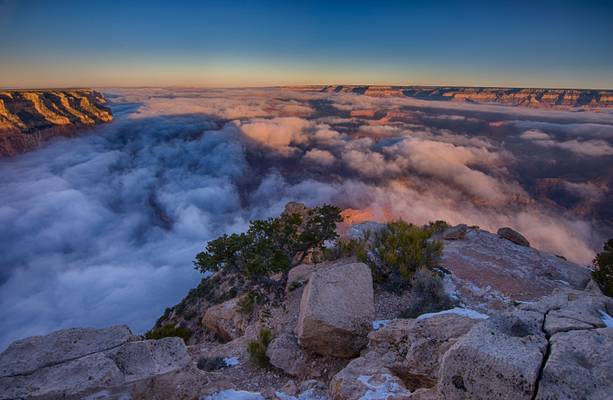
by Sandeep Thomas
Rose Kennedy.
| facebook | 500px | ferpectshotz |
Another sunrise shot from the Grand Canyon trip. I think I took this later when the sun was above the horizon and when the light started coming in strong. I am really stoked that this occurred right in front of me, usually I am not even close to that lucky.
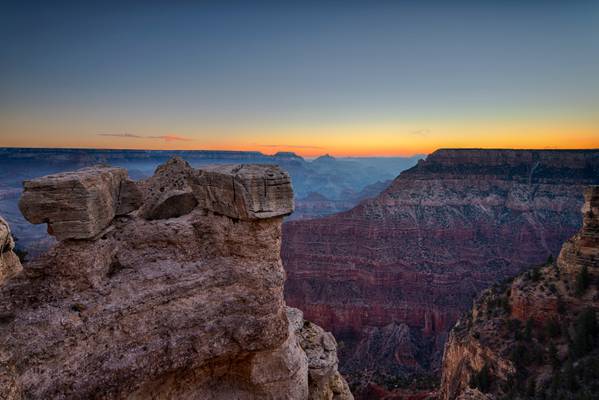
by Sandeep Thomas
- Henry Morton Stanley.
| facebook | 500px | ferpectshotz |
My second shot from Mather Point. While its customary to take the shots at this location pointing west as the sun slowly lights up the North rim walls, the massive boulder standing eastwards piqued my interest and I went to take a shot of it before I took the picture I posted yesterday. It did cost me the prime spots at Mather point but I really loved the texture of this rocks and the glow of the sky. I wish now that I had spent a bit more time here for the sun to actually rise.
Anyways if you find yourself at this location don’t make the same mistake I did and see if you can get some interesting shots facing the sun, trust me you won’t be disappointed. Thanks for visiting and your wonderful comments and faves, and have a nice Thursday.

by Sandeep Thomas
- Marc Chagall.
| facebook | 500px | ferpectshotz |
Another shot of the perfect inversion form Thanksgiving weekend. We were exploring the eastern rim of the canyon and having a hard time actually seeing anything due to the immense amount of fog which was rolling out of the canyon. We finally took a break at one of the vista locations and the clouds broke for a short while and gave us a good view of the Desert view Watch tower. I took this shot using the Tamron 70-300 VC.
Thanks for visiting, Have a nice Monday..
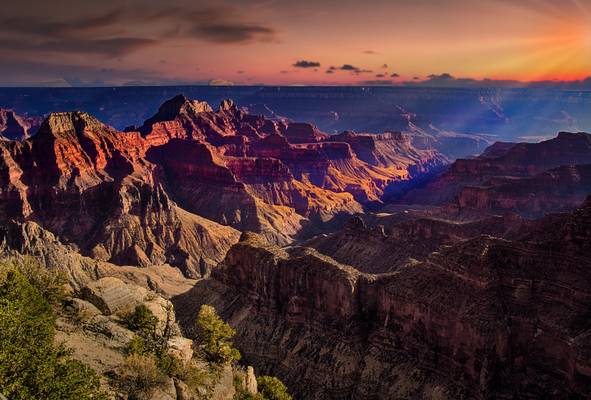
by Dominic Nessi
- The Grand Canyon is a steep-sided canyon carved by the Colorado River in Arizona, United States. The Grand Canyon is 277 miles (446 km) long, up to 18 miles (29 km) wide and attains a depth of over a mile (6,093 feet or 1,857 meters).[5]
The canyon and adjacent rim are contained within Grand Canyon National Park, the Kaibab National Forest, Grand Canyon–Parashant National Monument, the Hualapai Indian Reservation, the Havasupai Indian Reservation and the Navajo Nation. President Theodore Roosevelt was a major proponent of the preservation of the Grand Canyon area and visited it on numerous occasions to hunt and enjoy the scenery.
Nearly two billion years of Earth's geological history have been exposed as the Colorado River and its tributaries cut their channels through layer after layer of rock while the Colorado Plateau was uplifted. While some aspects about the history of incision of the canyon are debated by geologists, several recent studies support the hypothesis that the Colorado River established its course through the area about 5 to 6 million years ago. Since that time, the Colorado River has driven the down-cutting of the tributaries and retreat of the cliffs, simultaneously deepening and widening the canyon.
For thousands of years, the area has been continuously inhabited by Native Americans, who built settlements within the canyon and its many caves. The Pueblo people considered the Grand Canyon a holy site, and made pilgrimages to it. The first European known to have viewed the Grand Canyon was García López de Cárdenas from Spain, who arrived in 1540.
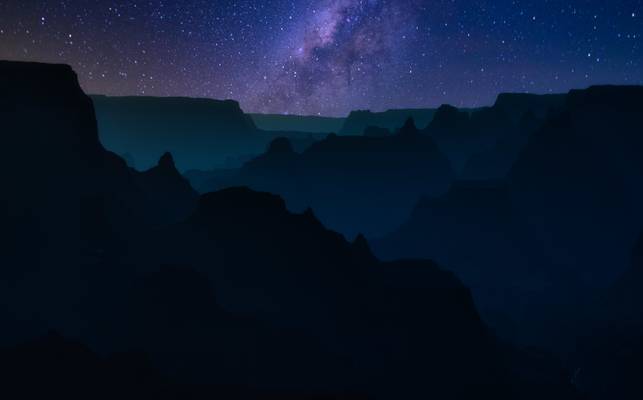
by David Hamments
... the peaks of Grand Canyon National Park
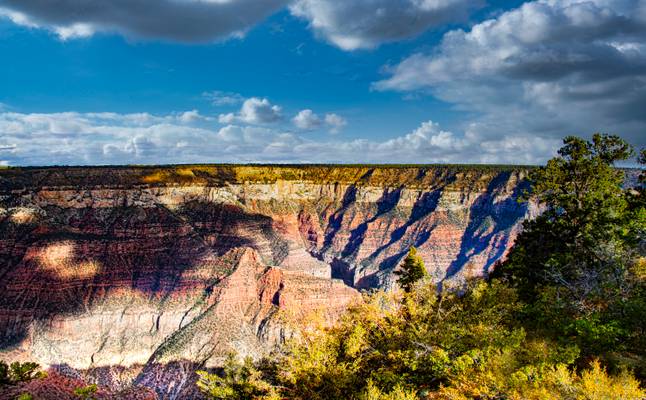
by Dominic Nessi
- The Grand Canyon is a steep-sided canyon carved by the Colorado River in Arizona, United States. The Grand Canyon is 277 miles (446 km) long, up to 18 miles (29 km) wide and attains a depth of over a mile (6,093 feet or 1,857 meters).[5]
The canyon and adjacent rim are contained within Grand Canyon National Park, the Kaibab National Forest, Grand Canyon–Parashant National Monument, the Hualapai Indian Reservation, the Havasupai Indian Reservation and the Navajo Nation. President Theodore Roosevelt was a major proponent of the preservation of the Grand Canyon area and visited it on numerous occasions to hunt and enjoy the scenery.
Nearly two billion years of Earth's geological history have been exposed as the Colorado River and its tributaries cut their channels through layer after layer of rock while the Colorado Plateau was uplifted. While some aspects about the history of incision of the canyon are debated by geologists, several recent studies support the hypothesis that the Colorado River established its course through the area about 5 to 6 million years ago. Since that time, the Colorado River has driven the down-cutting of the tributaries and retreat of the cliffs, simultaneously deepening and widening the canyon.
For thousands of years, the area has been continuously inhabited by Native Americans, who built settlements within the canyon and its many caves. The Pueblo people considered the Grand Canyon a holy site, and made pilgrimages to it. The first European known to have viewed the Grand Canyon was García López de Cárdenas from Spain, who arrived in 1540.
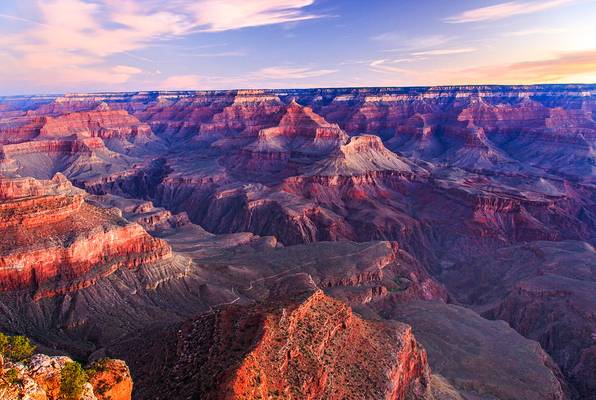
by Yi Jiang
Grand Canyon National Park
Thanks to all Phoide contributors to Grand Canyon National Park!
Most notably Sandeep Thomas, Andrey Sulitskiy, David Hamments and Yi Jiang.
